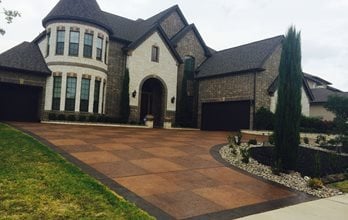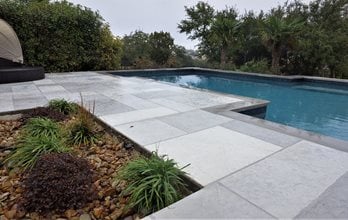Can You Pour Concrete Over Concrete?
Answers to questions about putting a layer of concrete over an existing concrete slab By applying a coating of Classic Texture on top of a concrete slab at this patio in Nashville, SUNDEK of Nashville created an elegant textured surface for the space.
By applying a coating of Classic Texture on top of a concrete slab at this patio in Nashville, SUNDEK of Nashville created an elegant textured surface for the space. Can you pour concrete over concrete?
In theory, yes, pouring concrete over concrete is possible. Typically people want to pour concrete over old concrete because their existing surface is slightly damaged, faded, or just outdated.
Get a Free QuoteWhat are the downsides to pouring concrete over concrete?
It’s important to know that while it is possible to pour concrete over existing concrete slabs, there are many serious problems that can arise when you pour concrete over an existing concrete surface. Here are a few of them:
- If your existing surface isn’t structurally sound or has issues such as cracking, your newly poured concrete will have the same issues.
- When you pour the new layer of concrete mix over your old concrete, you’ll add height to your surface. That extra height may pose problems in front of doorways, next to stairs, or in spots where your concrete meets other paving.
- You may make your concrete slab more prone to damage from freezing temperatures.
Does concrete stick to concrete?
If you pour a new layer over concrete right on top of the old one, you won’t get proper adhesion. You must properly prepare your concrete slab and then apply a chemical bonding agent on top of it so your new concrete adheres properly.
 Staining your concrete surface is a great way to give your concrete surface a refresh. This concrete driveway was colored by ATD Concrete Coatings using SunAcid
Staining your concrete surface is a great way to give your concrete surface a refresh. This concrete driveway was colored by ATD Concrete Coatings using SunAcidCan you pour concrete over cracked concrete?
Pouring concrete over cracked concrete before at least repairing the cracks is not going to go well. If the issues that caused the cracking to occur on your existing concrete surface are still present, they will affect your new concrete surface, too. It’s best to repair the cracks and resolve the issue that’s causing the cracking before attempting to cover it up.
How thin can you pour concrete over concrete?
Your new layer needs to be at least 2 inches thick. If it’s any thinner than that, it’ll easily crack under pressure and won’t adequately bond to your surface.
What are other options?
 For this residential pool area in Jonestown, TX, SUNDEK of Austin applied a coating of SunStamp to create a decorative surface that’s also durable and non-slip.
For this residential pool area in Jonestown, TX, SUNDEK of Austin applied a coating of SunStamp to create a decorative surface that’s also durable and non-slip.Pouring concrete over concrete isn’t always the best way to update or fix your concrete slab. Here are several other options you may want to consider:
- Resurface your concrete. If your surface has minor imperfections and you’re looking for a totally new look, resurfacing may be the best option. With resurfacing, a contractor can cover your existing concrete slab with a coating that’s specifically formulated for this purpose. Here are some of the benefits:
- The coating can be customized with colors, textures, and patterns so you can get the look of your choice.
- Resurfacing with a stamped overlay can give you the look of stamped concrete without having to pour a concrete slab.
- Coatings are thin and add minimal height when compared to poured concrete.
- Stain your concrete surface. If your existing surface doesn’t have any serious damage and you want to cover it up because it’s faded or you’re just looking for a refresh, staining is a better option. There are many colors available, and a nice coat of stain can give your surface a refreshed look.
- Remove your existing concrete and start from scratch. This isn’t an ideal solution, but sometimes it’s necessary. If your concrete surface is severely damaged, you may be better off tearing it out completely. The best way to find out is to set up an appointment with a contractor. A reputable contractor will never suggest pouring a coating over a non-viable concrete surface
Find a local contractor who does concrete resurfacing & staining
SUNDEK has local contractors all across the country ready to help with your project. Find a contractor near you.
Your Local Contractor:
SUNDEK Resources
COLOR CHARTS & BROCHURES
View the wide range of color options and brochures available through our various systems.
COMMERCIAL CONTRACTING NETWORK
We partner with architects and builders to deliver commercial and industrial projects.
AWARD-WINNING PROJECTS
See outstanding SUNDEK projects from contractors across the country.
LOOKBOOKS, STYLE & BEST PRACTICE GUIDES
Useful tips to design and run your projects smoothly.
ARCHITECTS/GENERAL CONTRACTORS
Find design cut sheets, system guides, tech-app sheets, specifications and more.